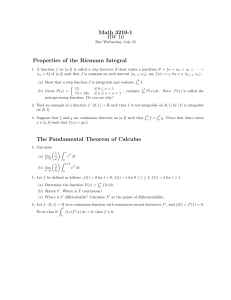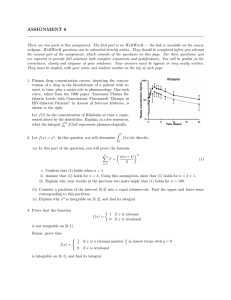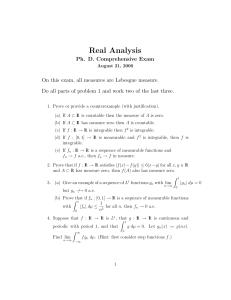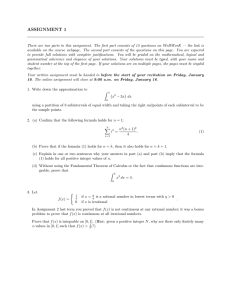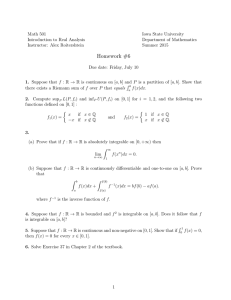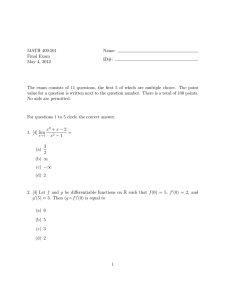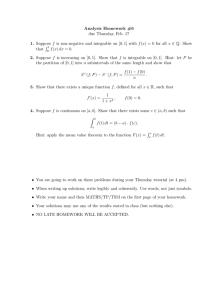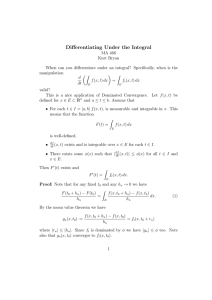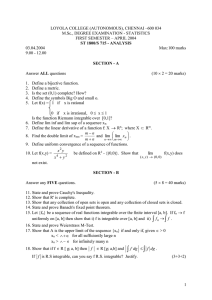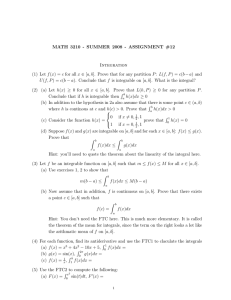MATH 101 V2A
advertisement
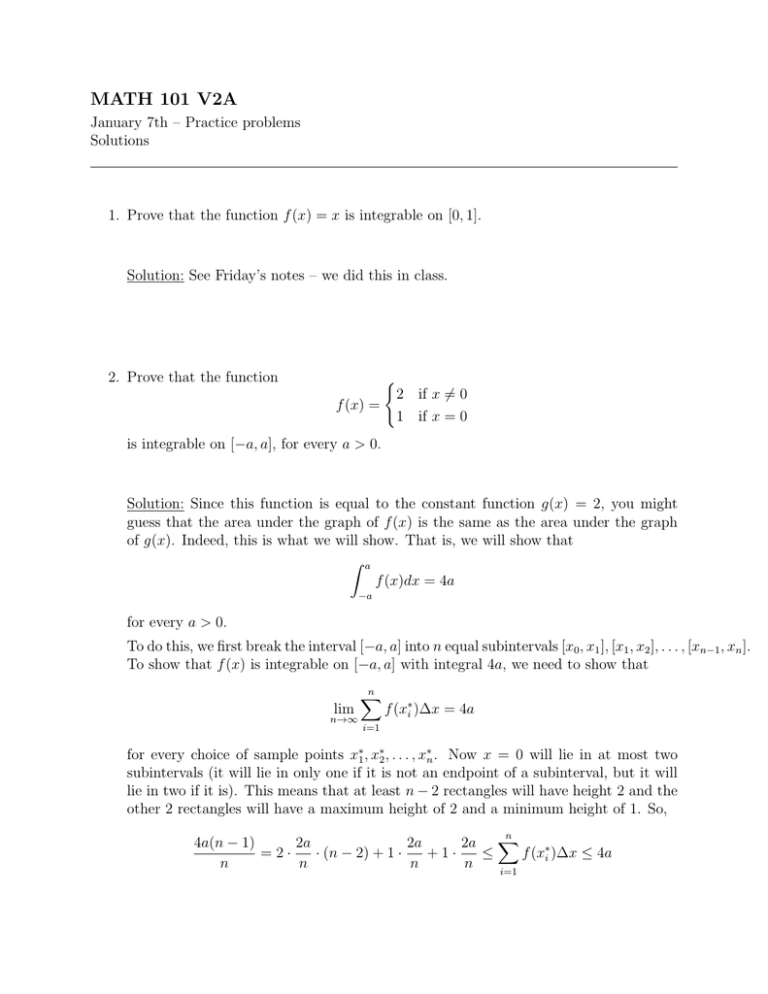
MATH 101 V2A January 7th – Practice problems Solutions 1. Prove that the function f (x) = x is integrable on [0, 1]. Solution: See Friday’s notes – we did this in class. 2. Prove that the function ( 2 if x 6= 0 f (x) = 1 if x = 0 is integrable on [−a, a], for every a > 0. Solution: Since this function is equal to the constant function g(x) = 2, you might guess that the area under the graph of f (x) is the same as the area under the graph of g(x). Indeed, this is what we will show. That is, we will show that Z a f (x)dx = 4a −a for every a > 0. To do this, we first break the interval [−a, a] into n equal subintervals [x0 , x1 ], [x1 , x2 ], . . . , [xn−1 , xn ]. To show that f (x) is integrable on [−a, a] with integral 4a, we need to show that lim n→∞ n X f (x∗i )∆x = 4a i=1 for every choice of sample points x∗1 , x∗2 , . . . , x∗n . Now x = 0 will lie in at most two subintervals (it will lie in only one if it is not an endpoint of a subinterval, but it will lie in two if it is). This means that at least n − 2 rectangles will have height 2 and the other 2 rectangles will have a maximum height of 2 and a minimum height of 1. So, n 4a(n − 1) 2a 2a 2a X =2· · (n − 2) + 1 · +1· ≤ f (x∗i )∆x ≤ 4a n n n n i=1 for any choice of sample points x∗1 , x∗2 , . . . , x∗n . Taking the limit as n goes to infinity of the above tells us that n X lim f (x∗i )∆x = 4a n→∞ for every choice of sample points integral 4a for any a > 0. i=1 x∗1 , x∗2 , . . . , x∗n . 2 So, f (x) is integrable on [−a, a] with
